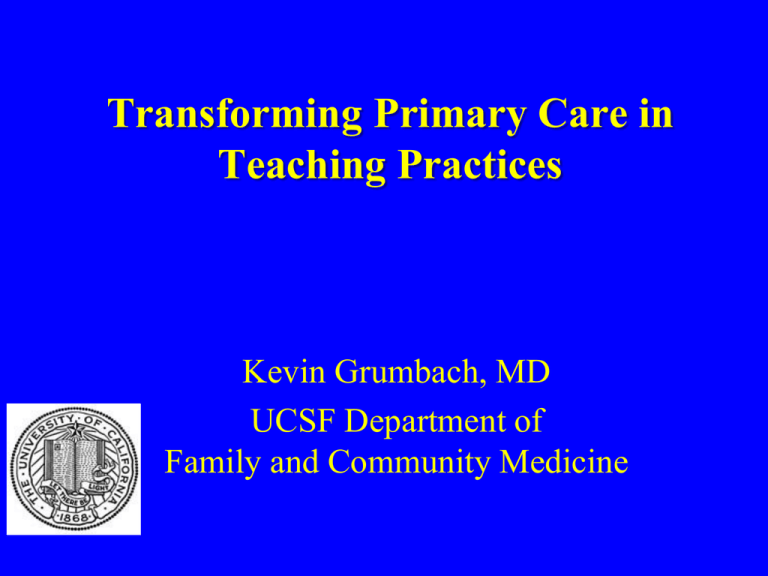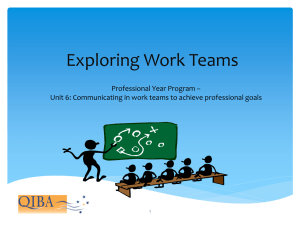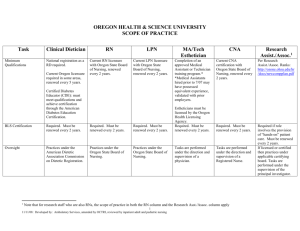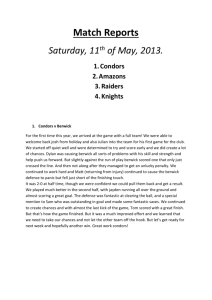Faculty Session Powerpoint
advertisement

Transforming Primary Care in Teaching Practices Kevin Grumbach, MD UCSF Department of Family and Community Medicine “As “incorporating science into practice” was the primary form that a new social need took for Flexner, so should “incorporating system improvement into practice” be the response to the emerging social need 100 years later… The new social context requires preparation of physicians to thrive in systems of inescapable interdependence.” Don Berwick, Jonathan Finkelstein. “Preparing Medical Students for the Continual Improvement of Health and Health Care: AbrahamFlexner and the New ‘Public Interest.’” Academic Medicine 2010 Berwick and Finkelstein: A Proposed Core Competency • “Leading, following, and making changes in health care: Understanding how to function in, and to lead, teams, and to organize and participate in intentional change.” Primary Care Transformation and the Imperatives of: • Systems • Teams • Improvement The Team Huddle Swiss Clocks Obtaining a Narcotic Refill in FHC Chronic Pain Management Triplicate Refill Process - Current Process Part I - Initiation of Process and Call-In Flow 09/2003 See Scheduled Appt Flow P at ient has a pre-planned, scheduled appt Patient needs a Refill Patient calls the clinic Patient comes into clinic Primary's Voice Mail Patient Leaves Message Team Clerk Contacts Primary Note in Mail Box Timeliness of message and retrieval Completeness of Information See Drop-In Flow Consult Attending Schedule Appt Pager Refill Clinic Primary Message Retrieved Gathers Information See Scheduled Appt Flow Call Returned Pages Primary Reviews Contract Book Reviews LCR Makes Decision Based on Available Informat ion Refills Medication Does Not Refill Medication Requests Chart How can change be created in complex adaptive organizations? It Takes a Team to Make Primary Care Work A primary care physician with a panel of 2500 average patients would spend: • 7.4 hours per day to deliver all recommended preventive care (Yarnall et al. Am J Public Health 2003;93:635) • 10.6 hours per day to deliver all recommended chronic care services (Ostbye et al. Annals of Fam Med 2005;3:209) It Takes a Team • Select the players and assign positions • Design the plays • Practice the plays Share the Care 10 building blocks of high-performing primary care Tom Bodenheimer, MD, MPH Center for Excellence in Primary Care (CEPC) Department of Family and Community Medicine, UCSF 10 Building Blocks 10 Template of the future Patient-centeredness is not one separate building block Prompt access to care 5 Patient-team partnership 1 Engaged leadership 9 8 It infuses all the blocks 6 Population management 2 3 Data-driven improvement Empanelment Coordination of care 7 Continuity of care 4 Team-based care Are we serious about teamwork? "It is naïve to bring together a highly diverse group of people and expect that, by calling them a team, they will in fact behave as a team. It is ironic indeed to realize that a football team spends 40 hours a week practicing teamwork for the two hours on Sunday afternoon when their teamwork really counts. Teams in organizations seldom spend two hours per year practicing when their ability to function as a team counts 40 hours per week.” Harold Wise et al. Making Health Teams Work. Ballinger Publishing Co, 1974 Where Have I Heard This Before… • Systems? • Teams? What’s Different This Time? • Business case and value proposition • Reframing: – From the fringe to the cutting edge Evidence base on health care teams Studies of general practices in England demonstrated that better teamwork and team climate are associated with better processes of care for patients with diabetes, and better continuity of care, access to care, and patient satisfaction. Stevenson et al. . Family Practice 2001;18(1):21-26. Campbell et al. BMJ 2001;323:1-6. Evidence base on health care teams At Kaiser Permanente in Georgia, primary care teams with higher “collaborative clinical culture” scores had superior patient outcomes, including better patient satisfaction and better control of diabetes and hyperlipidemia. Roblin et al. Presented at Academy Health Annual Meeting, 2002. San Francisco Share the Care PC Model Reform of SFGH FHC Model • 4 geographic practice teams – ~2,500-3,000 patients per team – Residents on 3 of 4 teams • New team leadership structure – FM faculty + FNP/PA + RN – Accountable for team performance • Team level patient panel • Team level PI metrics – Stable faculty clinical supervision Implications for Education Challenge to the Medical Education Culture • Leaders!!! • Followers • Innovators!!! • Implementers • Individualistic, • Team Players Competitive Brilliance!!! Challenge to Family Medicine Culture George Saba et al. The Mythology of the Lone Physician: Towards a Collaborative Alternative. Ann Fam Med (in press). From “Me” to “We” • “We will need to assemble systems in which physicians can build satisfying work relationships with staff and patients and feel supported in sharing responsibility for health outcomes. In place of the currently dominant “silo” training, we will need to foster interprofessional education about collaborative communication and team building skills. Expectations for role, competence, satisfaction, and success will need to change.” – G Saba et al., The mythology of the lone physician. 2005 AHRQ Report • “The delivery of recurrent team training across all segments of the health care community is, at present, haphazard. Few structural or procedural mechanisms exist to ensure that it continues at regular intervals…Simply stated, medical team training must be instilled and reiterated at every stage of a care provider's career.” Who is way ahead of us in investing in team training? • Aviation industry – Crew Resource Management (CRM) • Military – Tactical Decision Making Under Stress (TADMUS) – Team Dimensional Training (TDT) • San Francisco 49ers AHRQ Primary Teamwork Competencies Knowledge Skills Attitudes Cue/strategy associations, shared task models, familiarity with teammate characteristics, knowledge of team mission, objectives, norms, and resources, task-specific responsibilities Mutual performance monitoring, flexibility/adaptability, supporting/back-up behavior, team leadership, conflict resolution, feedback, closed-loop communication/information exchange Team orientation (morale), collective efficacy, shared vision, team cohesion, mutual trust, collective orientation, importance of teamwork Resident Developmental Stages and Share the Care Model • Do you have to master it before delegating it? Competency: Systems Based Practice • Knowledge of systems – “a set of interrelated elements or components, interacting to achieve some shared goal” (Berwick & Finkelstein) • At many levels – – – – – Family systems Microsystems Health care system Public health and community systems Etc. Competency: Systems Based Practice • Understanding how systems change – Facilitators – Barriers Competence: Practice-Based Learning • More than just learning QI techniques • Sustained relationship and engagement over time with a practice and its workers and patients • Learners in authentic roles in care team – Learn it to share it One Proposed Notion • Align UCSF Medical Student education with SF Share the Care Teams delivery system model • Vice Dean Catherine Lucey, FCM faculty Margo Vener, Beth Wilson, Bill Shore Derek Siver’s Ted Talk on the First Follower • http://www.youtube.com/watch?v=fW8am MCVAJQ











